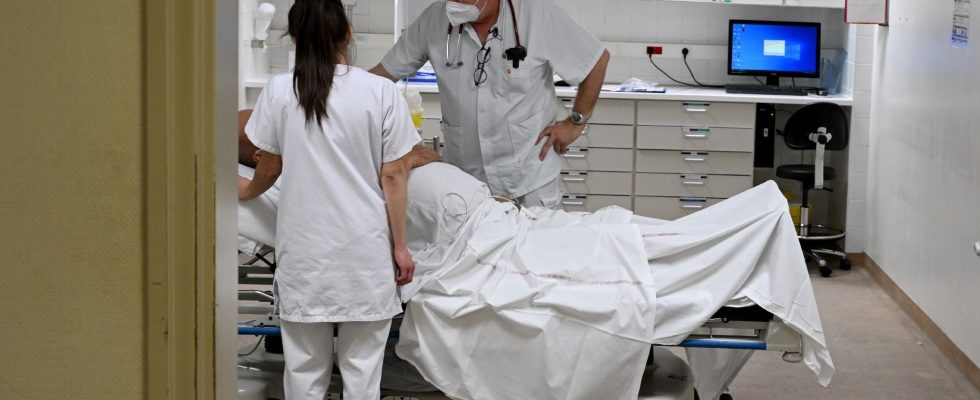The Minister of Health promised to “reopen beds” to relieve the hospital, but his “fight” promises to be tough: more than 6,700 full hospitalization beds were closed in 2022, continuing the decline observed in recent years. last twenty years. As of December 31, 2022, the 2,976 public and private hospitals had exactly 374,290 full hospitalization beds, or 6,713 fewer than the previous year (-1.8%), according to the report from the statistical department of social ministries (Drees) published Wednesday December 20.
Health establishments have, at the same time, created 2,591 partial hospitalization places, without a night spent in the establishment (+ 3.1%), to reach a total of 85,015 places. Unlike a bed, a day “place” can usually accommodate several daily patients. These figures, observed in both the public and private sectors, illustrate “a trend observed for several years”, which “reflects the desire” of the public authorities to reorganize the supply of hospital care towards more “ambulatory”, but also the shortages of staff, which “do not allow beds to be maintained”, according to the authors of the study.
Since the end of 2013, a total of 39,000 full hospitalization beds have been eliminated (-9.4% in nine years), and 17,400 partial hospitalization places have been created. The collapse in capacity has also been almost constant since the beginning of the 2000s, according to data available on the Irdes website (Institute for Research and Documentation in Health Economics). Caregivers regularly denounce these bed closures, which saturate services, put teams under pressure and increase tensions in emergency services.
Shortage of caregivers
“My only fight for the public hospital is the reopening of the beds, even if this is not very good news for Ondam (National Objective for Health Insurance expenditure),” said the minister. of Health Aurélien Rousseau during a hearing in mid-October at the National Assembly. If the beds close, according to him, “it is not for budgetary reasons”, it is because of the “lack of attractiveness” of the care professions. And the government is not “standing idly by”, he defended, referring to the large budgets allocated during the “Ségur de la Santé”, or the recent increases in night work.
At the end of November, he promised to “reopen several thousand beds by the end of the year”. In total, nearly 29,800 beds were eliminated over the period from the end of 2016 to the end of 2022, mainly corresponding to the presidency of Emmanuel Macron. This is much more than under his predecessor François Hollande (-15,000 between the end of 2012 and the end of 2017) but significantly less than during the five-year term of Nicolas Sarkozy (-37,000).
Capacity has also decreased “more rapidly” since 2020 than before the Covid-19 epidemic, notes Drees in its study. The health crisis can “explain an increased decline”, due in particular to the temporary reassignment of intensive care staff, the deprogramming of care or even the transformation of double rooms into single rooms. However, the decline observed in 2022 is the “most marked”, note the authors. Home hospitalization (HAD) saw its capacity increase by 1.6%, after a “jump” of 10.5% in 2020, and 6.8% in 2021.
